Finding the violet toothed polypores is always a happy surprise – a burst of color where it’s least expected. Violet toothed polypores look for all the world like a lighter, often duller version of the much sought after turkey tail mushroom. And, if all you do is see them from above, you’d probably write them off as boring. But then, look under the cap at the pores, and you’re in for a pleasant and beautiful surprise. The pores are profoundly and unmistakably purple.
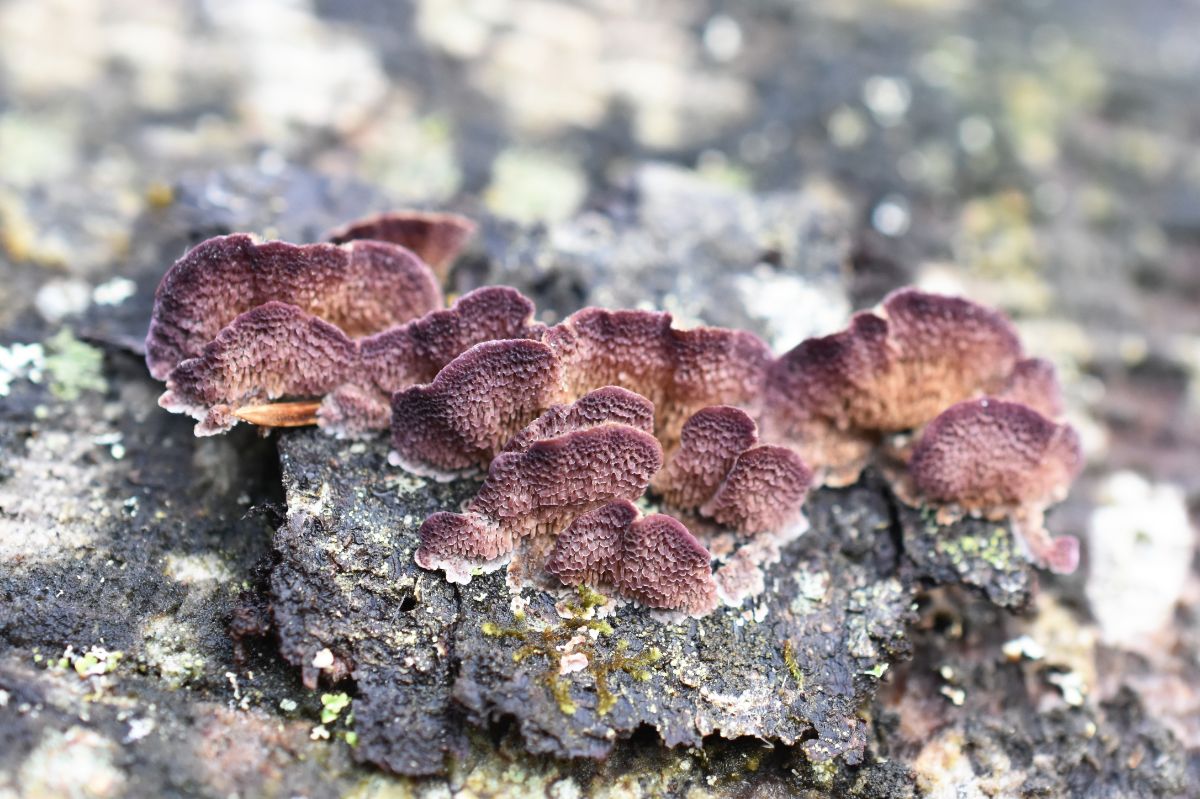
It’s a bit startling to see such stunning color on an otherwise drab, outwardly appearing species. This is yet another reason to always look at all angles of a mushroom species; some are rather boring, but others will astound you with a flash of brilliant coloring.
At first glance, it is very easy to mistake the violet toothed polypores with turkey tail. But, any question is soon dissipated by looking at the pores. While the violet-toothed polypore isn’t a prime medicinal species like the turkey tail, it is still an excellent species to know simply to admire its brilliant spore coloring.
- Scientific Name: Trichaptum biforme, Trichaptum abietinum, Trichaptum fuscoviolaceum, Trichaptum laricinum
- Common Names: Purple Tooth, Violet Tooth, Violet Toothed Polypore. Purplepore Bracket
- Habitat: Dead and decaying logs, stumps, and wood
- Edibility: Inedible
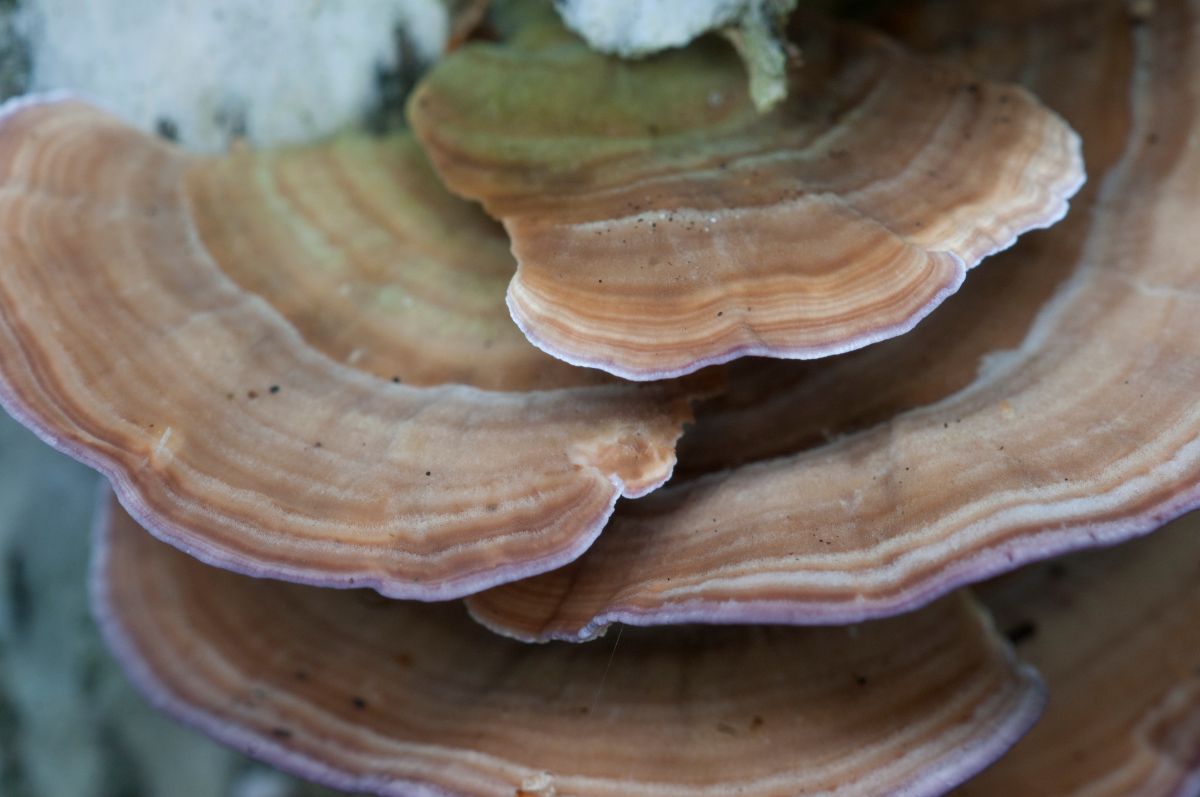
Jump to:
All About Violet Toothed Polypores
The violet toothed polypores, commonly known as “Purple Tooth” or “Violet Tooth,” are often confused with medicinal turkey tail because they look quite alike from above. Once you flip the cap upside down and look at the pores, though, the violet toothed polypore easily distinguishes itself. The pores are a beautiful violet-purple and make these fungi stand out.
There are four species of violet-toothed polypores in North America, with two being super common and the others less so. All these species are referred to by the same common name, and they can be challenging to differentiate based on looks alone. The difference is which trees they grow on, and in the case of one, how long the teeth are in maturity.
- Trichaptum biforme grows on hardwood
- Trichaptum abietinum grows on conifers, especially firs (abietinum is a reference to the genus abies, Fir trees)
- Trichaptum fuscoviolaceum grows on conifers, but its undersurface is more toothed, even to the point of looking like gills rather than pores
- Trichaptum laricinum grows on tamarack trees
The genus name, Trichaptum, translates to “with clinging hairs,” referring to its hairy cap.
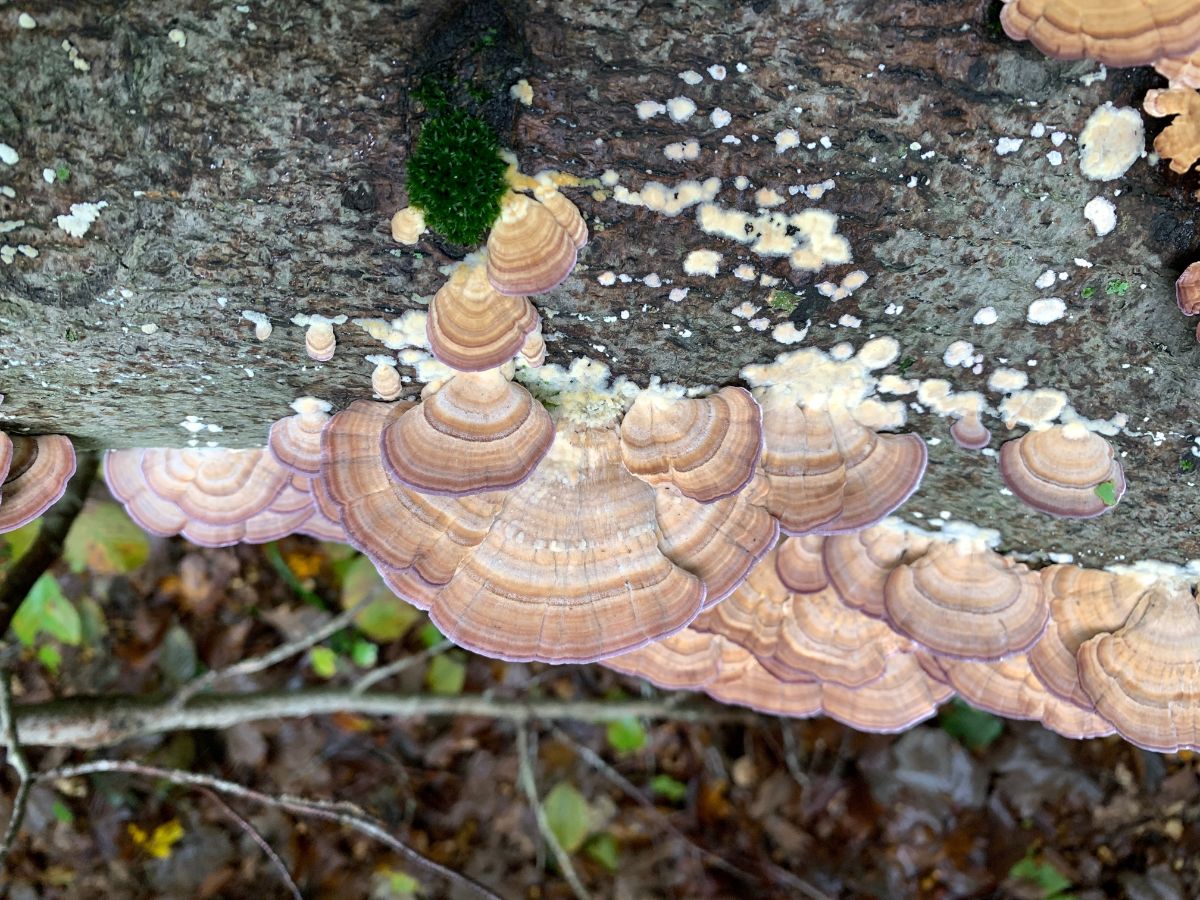
Violet Toothed Polypore Identification Guide
This guide is for all species because they look the same.
Season
These are perennial species and can be found year-round. During winter, they might be super dried out and deteriorating.
Habitat
This fungus is saprobic, meaning it feeds on dead or dying organic matter. It can be found decomposing stumps and logs across the continent. The violet toothed polypore is widely distributed and can occur on at least 65 tree hosts.
Violet-toothed polypores grow in overlapping clusters, tiers, or shelves on wood. They never grow from the ground. It’s not uncommon to find entire logs covered in them.
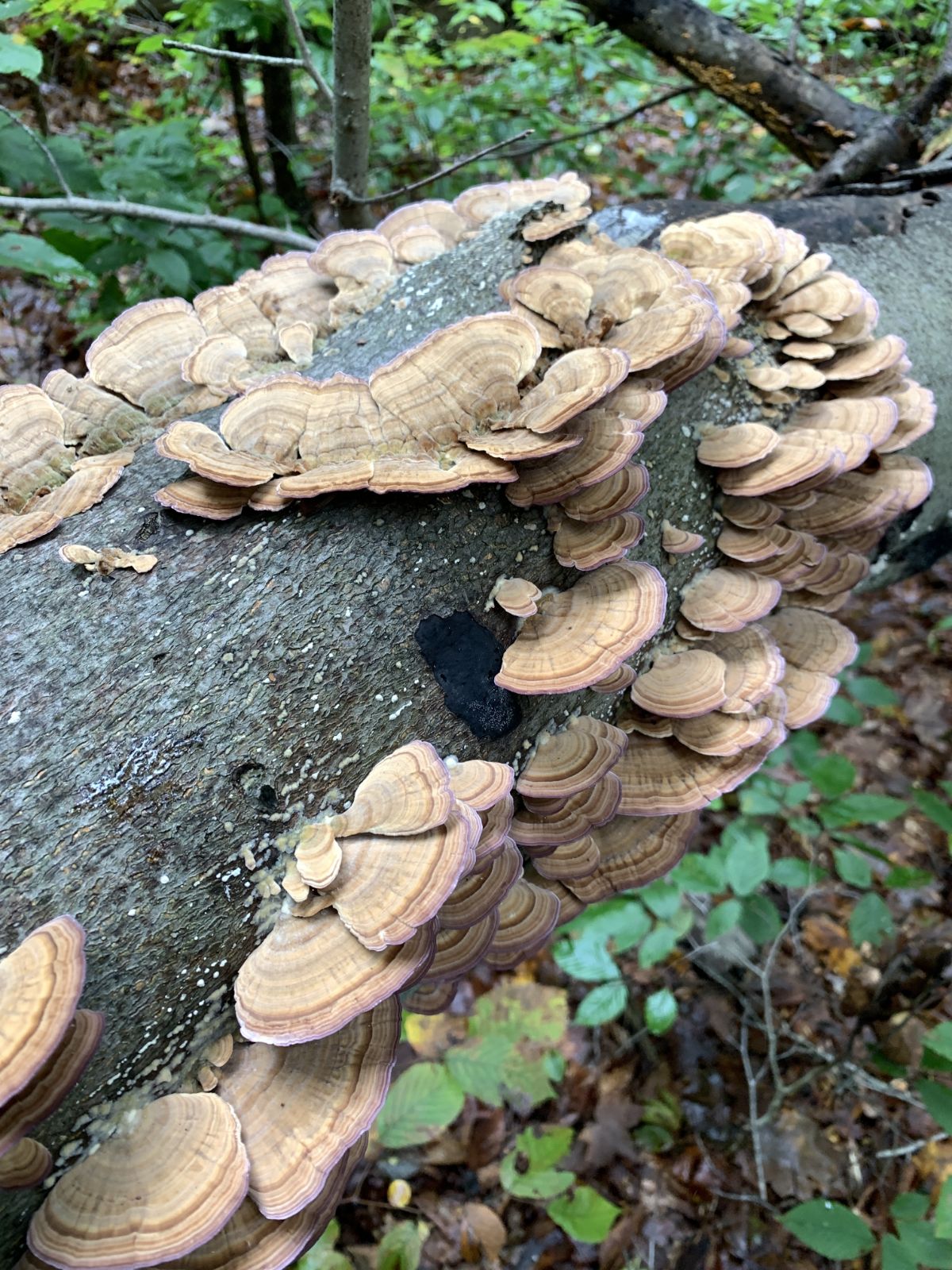
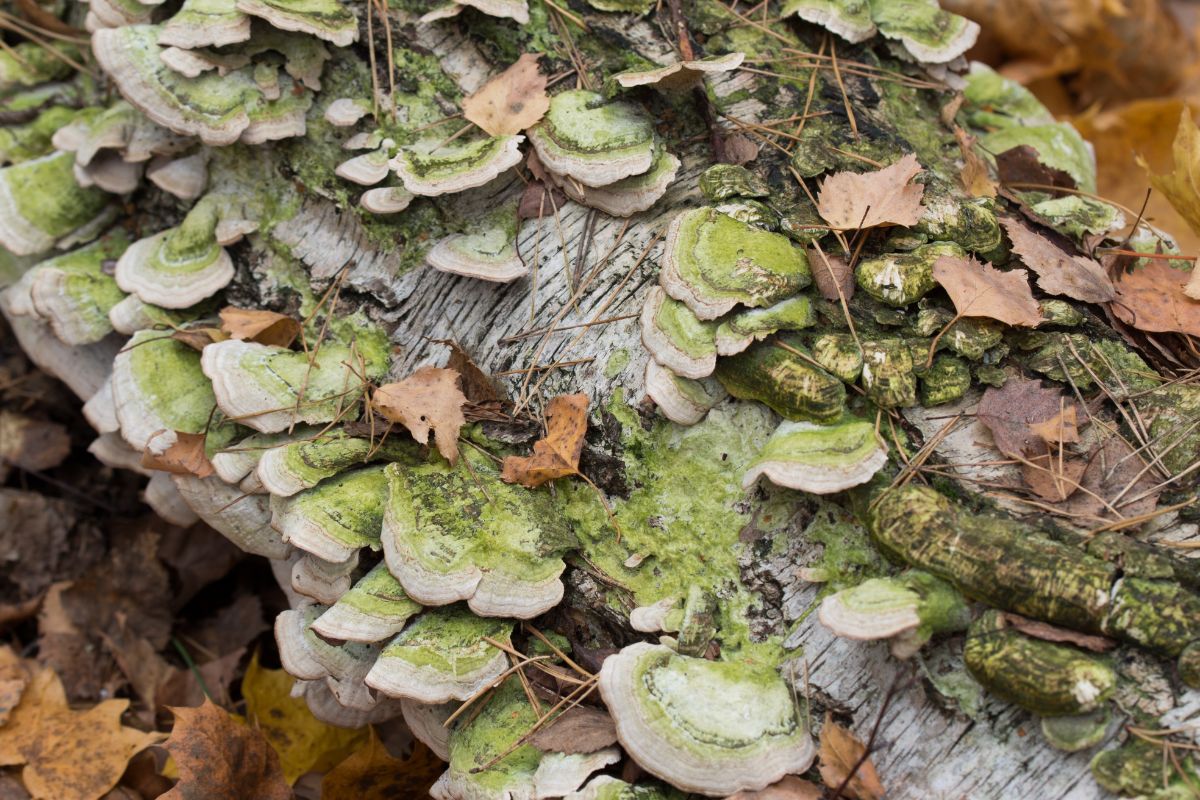
Identification
Cap
The cap of the violet toothed polypore is semicircular, flat, and measures between ¼ to 3 inches in width. The cap has zones of colors with clear distinctions between them. The colors range from off-white to gray to ochre and dark brown. Usually, there is a distinctive violet around the outer edge of the cap, but this fades with age and maturity and isn’t always apparent. The texture is tough and hairy.
The green that appears on the top of many caps is an opportunistic algae that takes up residence there. It is not harmful to the fungi; it’s more of peaceful co-existence between the two species.
Pores
The pore surface of these mushrooms starts out purplish, often vibrantly so. It does range, though, from light violet to grape purple. The color fades with age to a buff or brownish hue. However, it usually retains some violet tints near the cap edge. The pores start out like normal, small little tubes packed so close together it looks like a single sponge. With age, though, the pores turn toothlike; this is an unusual characteristic among polypores.
Stem
The violet toothed polypore is stemless. It attaches directly to the wood it is on.
Flesh
The flesh of this mushroom is whitish, tough, and leathery.
Odor and Taste
The violet toothed polypore does not have a distinct odor or taste.
Spore Print
The spore print of this mushroom is white.
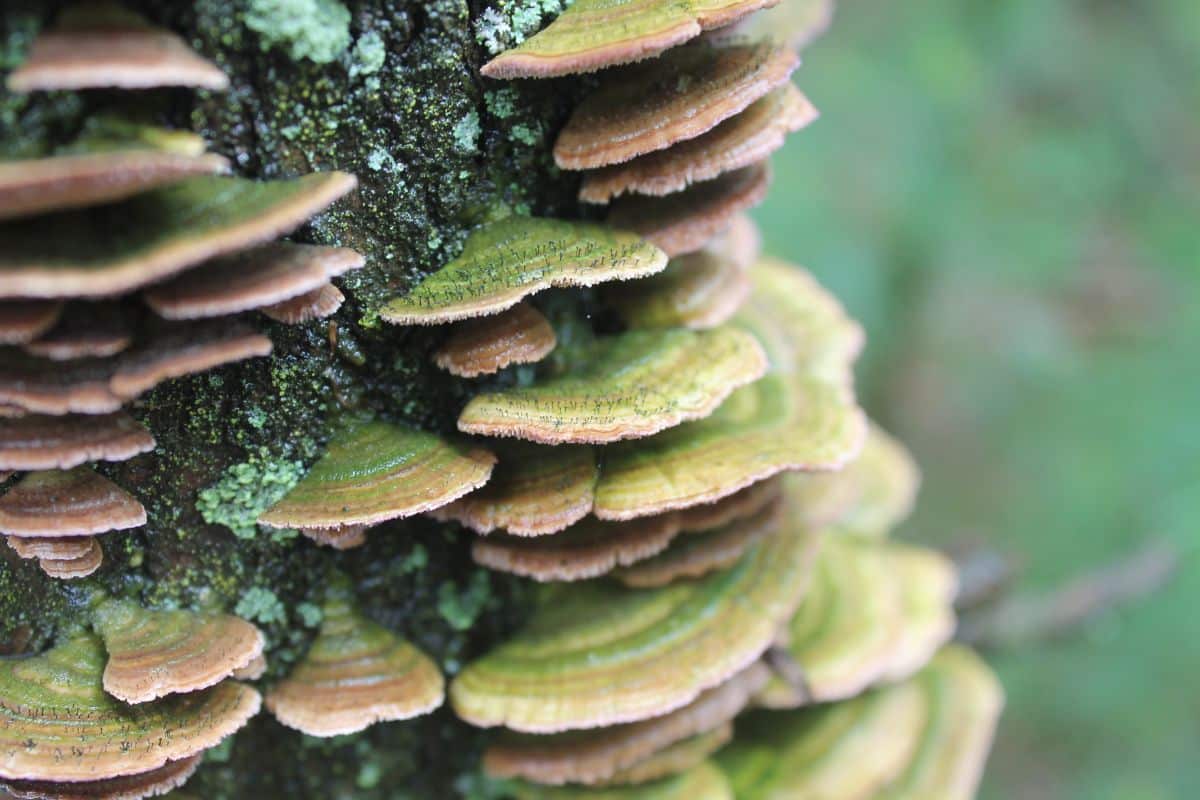
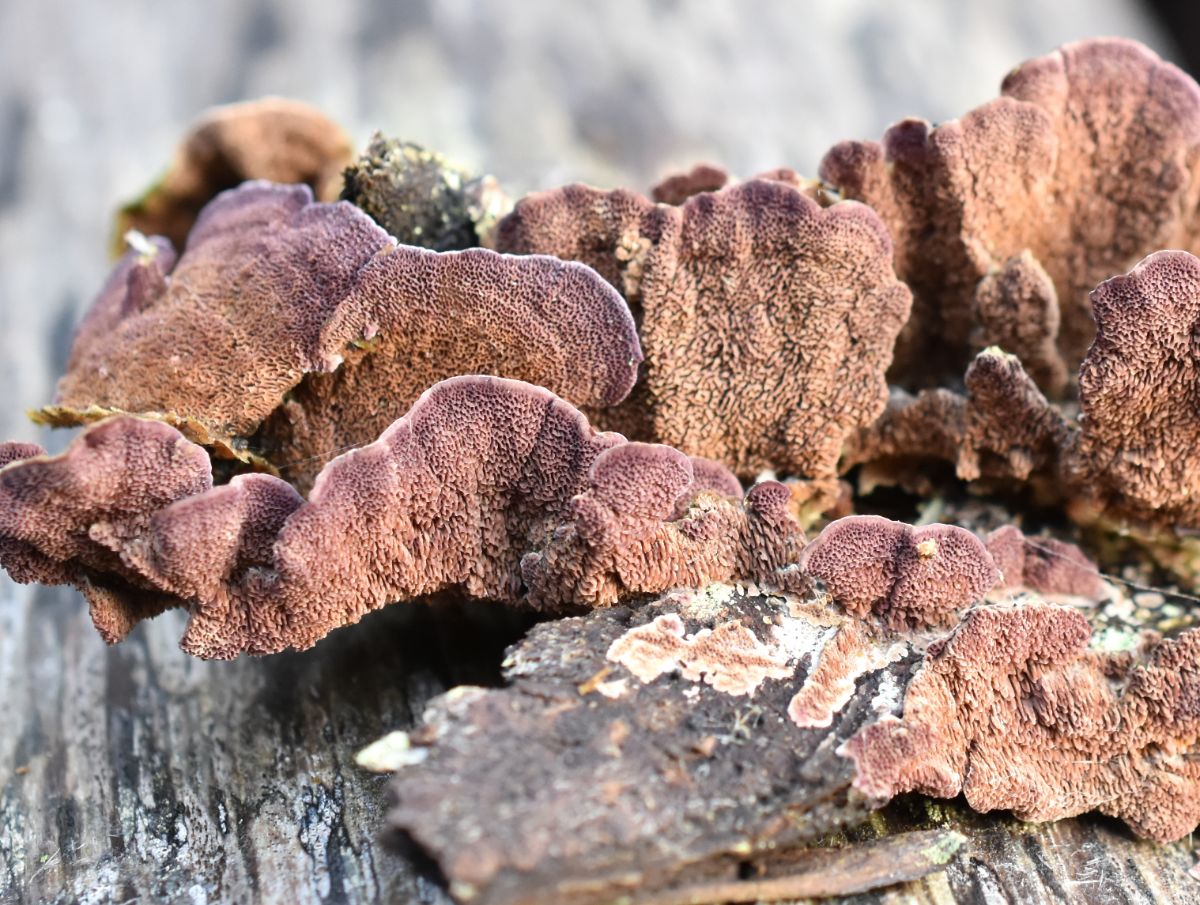
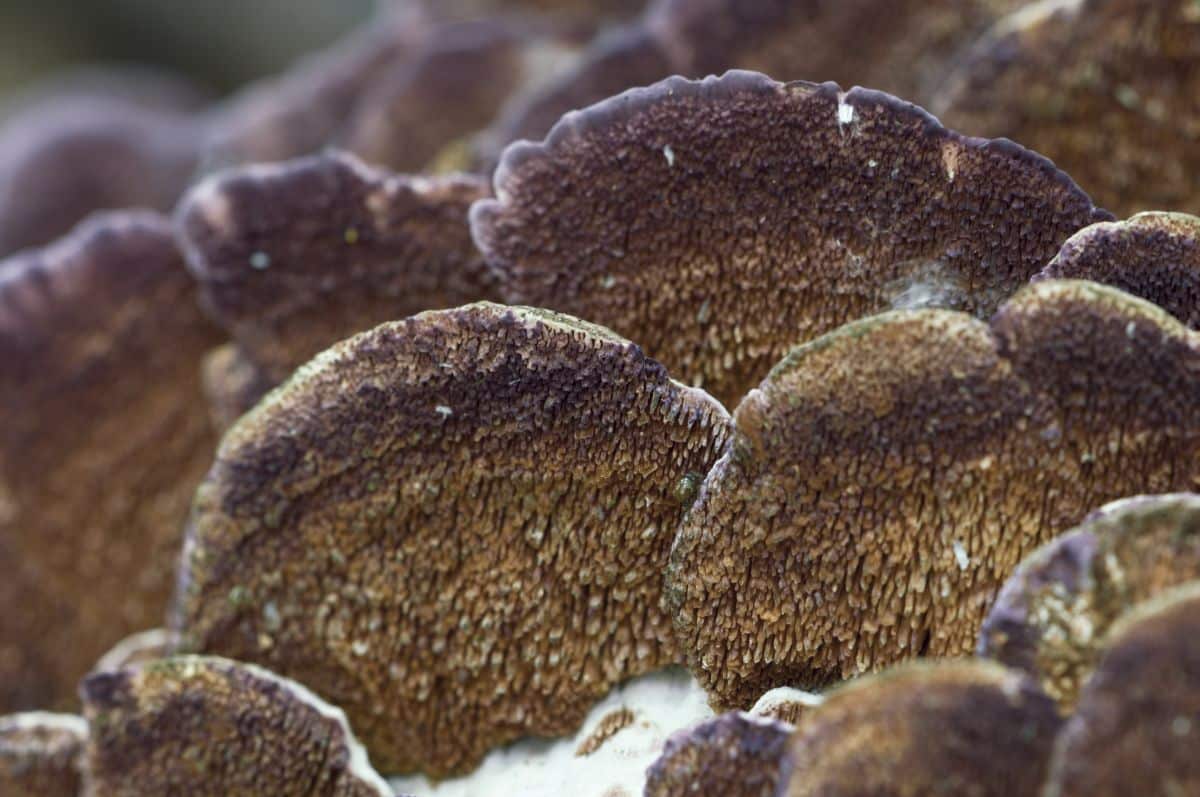
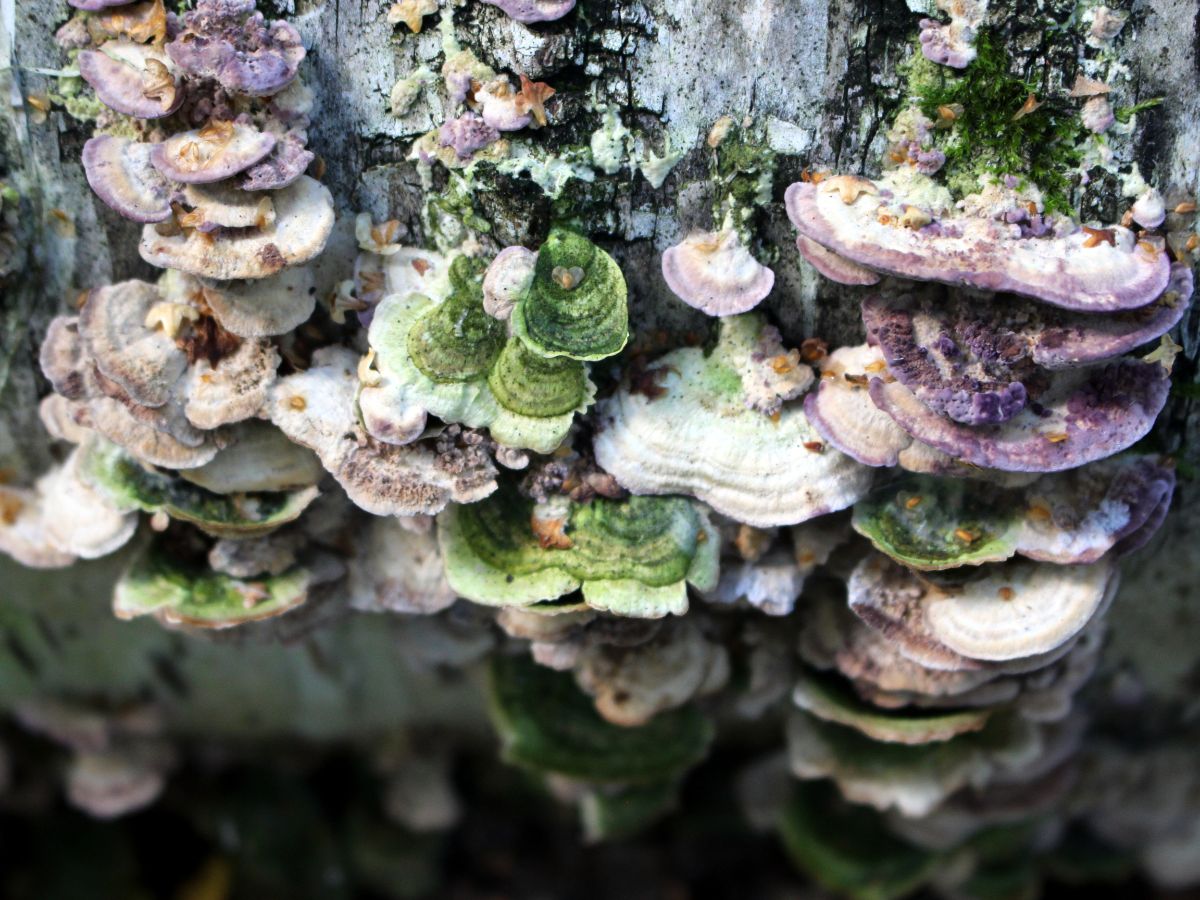
Violet Toothed Polypore Lookalikes
Trichaptum subchartaceum
This species grows only on aspen and poplar trees and does not develop an obvious tooth-like pore surface. It is also larger overall, whiter in color on top, and often grows in extremely dense overlapping clusters.
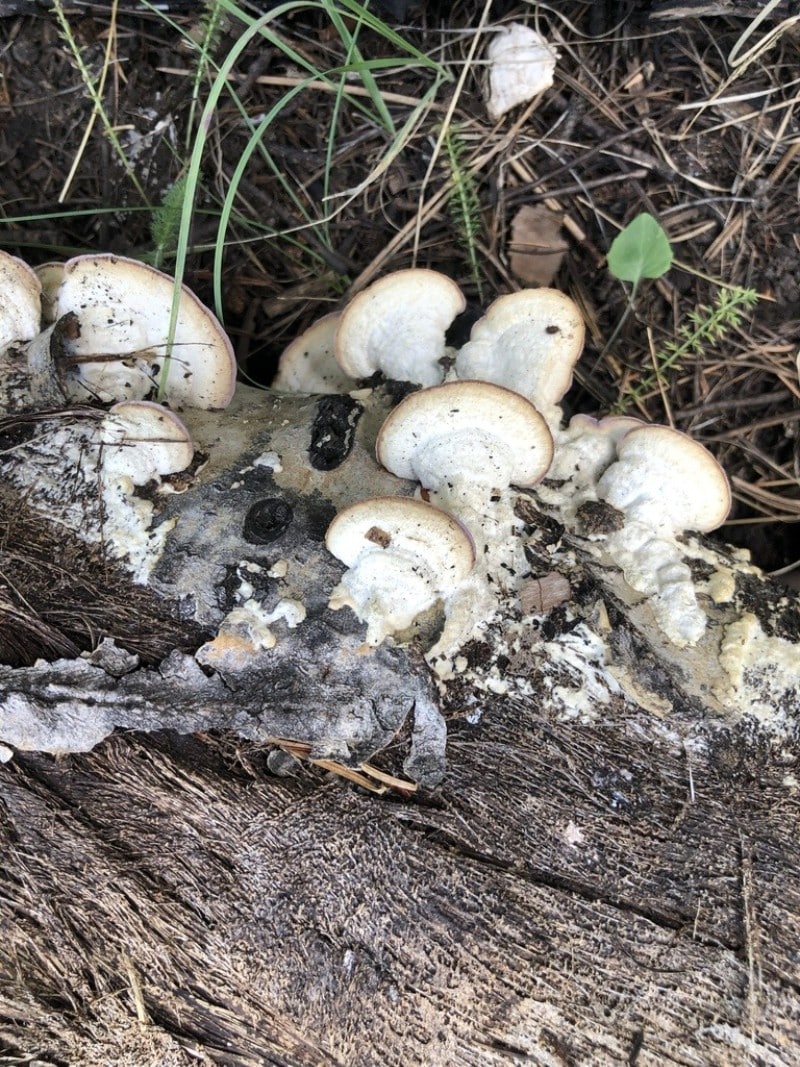
Turkey Tail (Trametes versicolor)
The turkey tail only looks alike from the top — brownish, graying zonal coloring on a thin, tough cap. Turkey tail mushrooms have white pores, though, never purple.
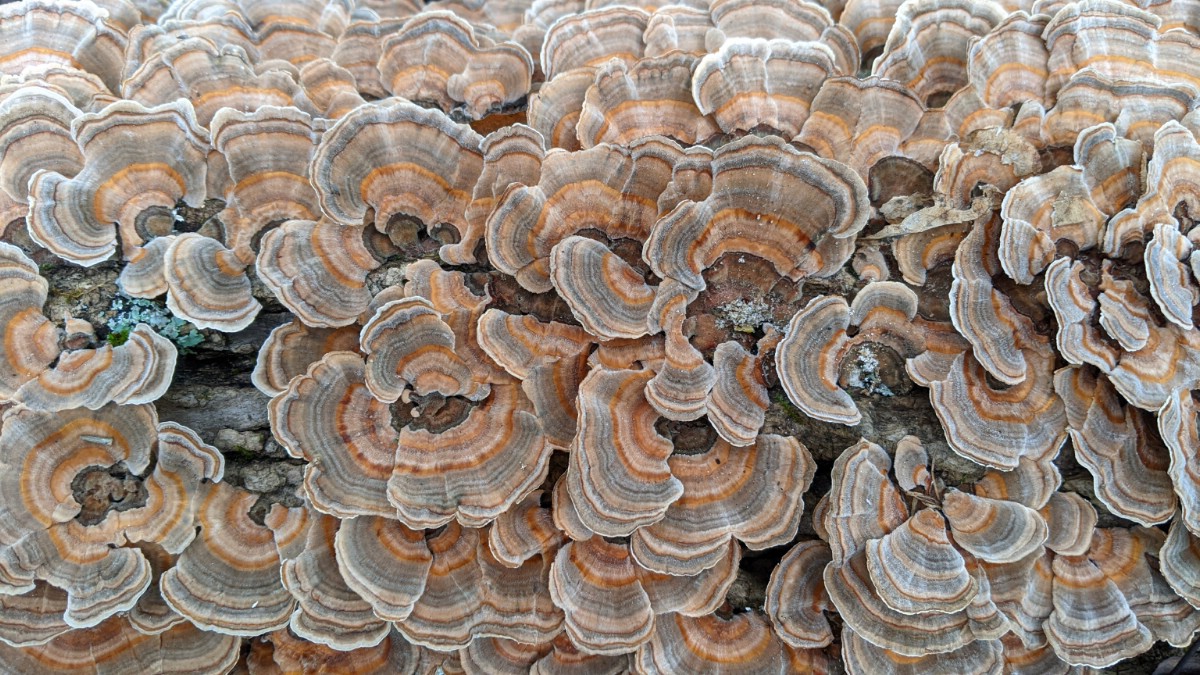
Violet Toothed Polypores Edibility
The violet toothed polypore isn’t toxic but it isn’t considered edible due to its tough, leathery texture.
Common Questions About Violet Toothed Polypores
Are violet toothed polypores medicinal?
Currently, there is no known medicinal use for the violet toothed polypore. However, like all fungi, it plays a crucial role in the ecosystem by decomposing dead wood and returning nutrients back into the soil.
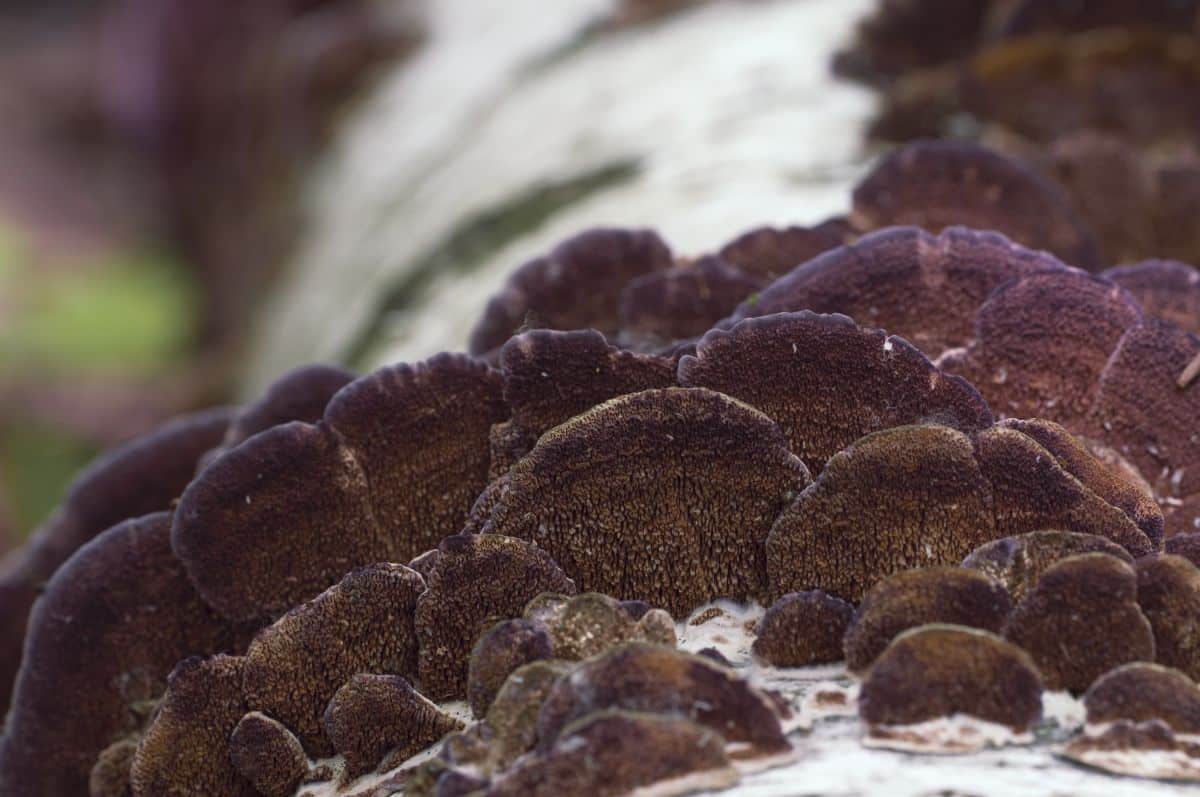

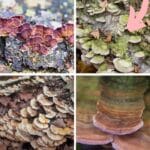

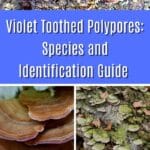
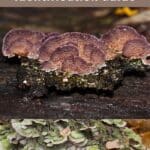

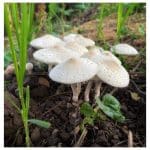
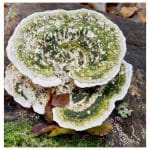
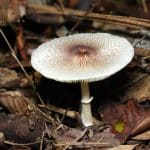
Leave a Reply